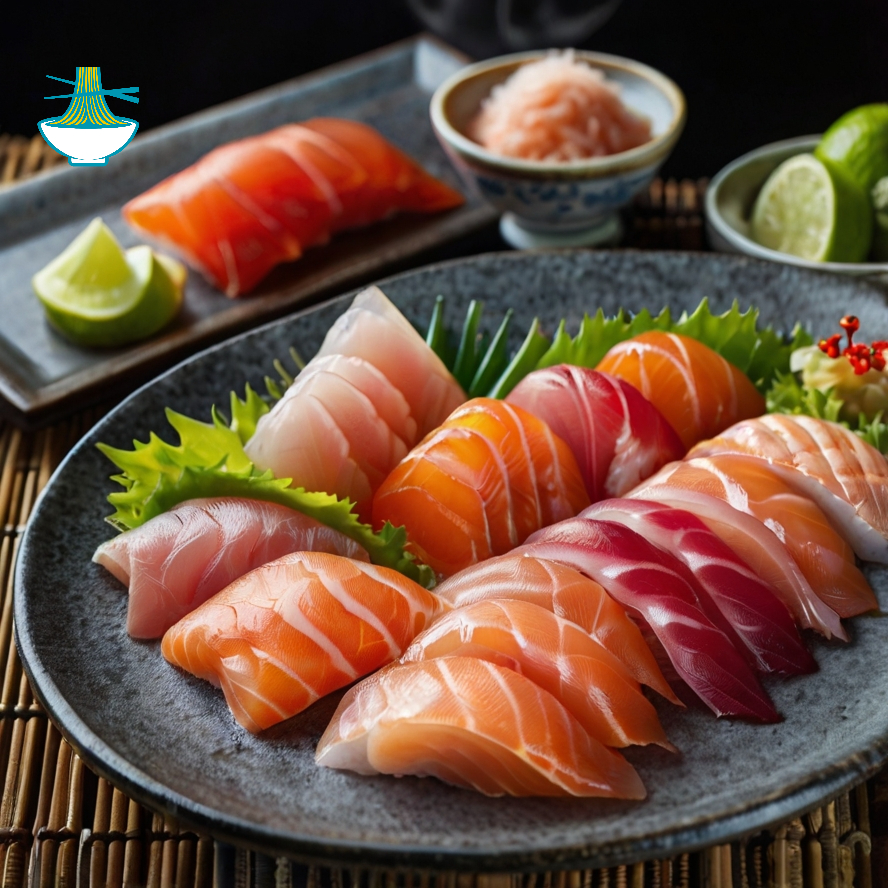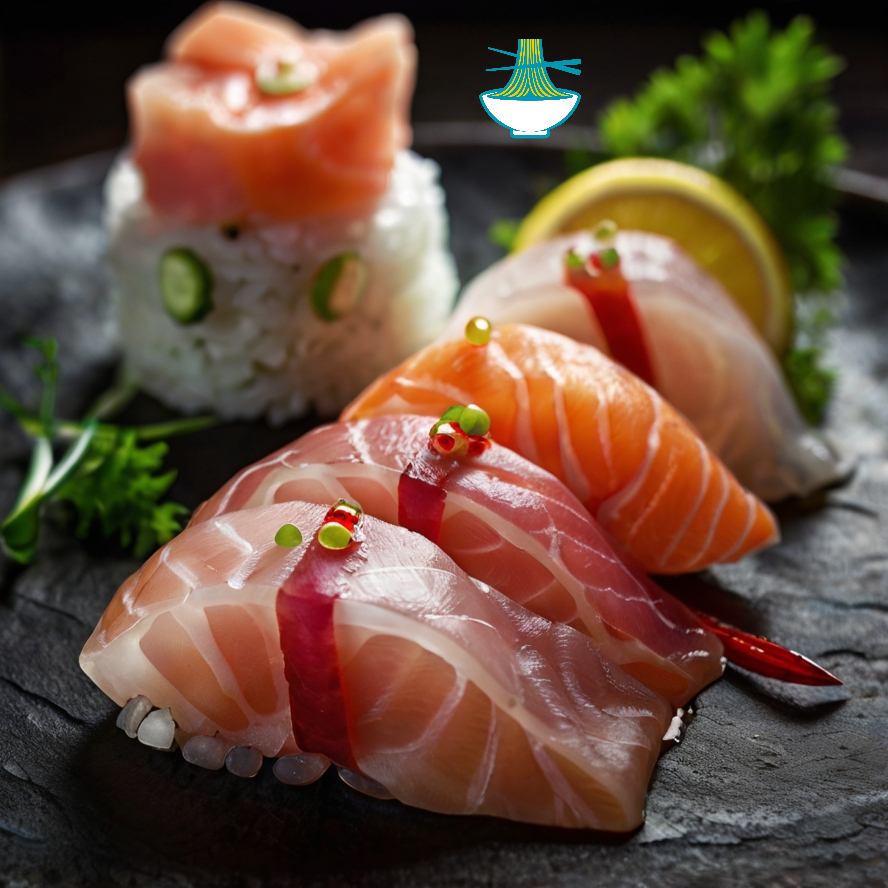Discover the exquisite flavors of sashimi, a traditional Japanese dish featuring thinly sliced, fresh raw fish. Explore the art of sashimi preparation and presentation, and learn about the different types of fish commonly used in this beloved dish. Whether you're a seasoned sushi enthusiast or new to Japanese cuisine, sashimi offers a unique culinary experience that is sure to delight your taste buds.
Sashimi is a traditional Japanese dish that showcases the pure flavors of fresh, high-quality fish. Here's a simple recipe to make sashimi at home:
Ingredients:
- 1 lb fresh, sushi-grade fish (such as tuna, salmon, or yellowtail)
- Soy sauce, for dipping
- Wasabi paste, for serving
- Pickled ginger, for serving
Instructions:
1- Begin by placing the fish in the freezer for about 30 minutes. This will help firm up the fish, making it easier to slice thinly.
2- Using a sharp knife, slice the fish against the grain into thin slices. The thickness of the slices can vary depending on your preference, but aim for slices that are about 1/4 inch thick.
3- Arrange the slices on a serving plate in a single layer, slightly overlapping each other.
4- Serve the sashimi immediately with soy sauce, wasabi paste, and pickled ginger on the side.
5- Enjoy the fresh, delicate flavors of your homemade sashimi!
Note: It's important to use sushi-grade fish for sashimi to ensure its freshness and safety for raw consumption.
Nutritional Values:
Here are the approximate nutritional values for the ingredients used in the previous sashimi recipe per serving (assuming 4 servings):
Fresh, sushi-grade fish (tuna, salmon, or yellowtail):
- Calories: 120-200 kcal
- Protein: 24-28 g
- Fat: 1-12 g
- Carbohydrates: 0 g
- Fiber: 0 g
- Sugar: 0 g
- Cholesterol: 25-75 mg
- Sodium: 25-50 mg
benefits:
- Rich in omega-3 fatty acids, which are beneficial for heart health and may reduce the risk of cardiovascular disease.
- Excellent source of high-quality protein, which is essential for muscle repair and growth.
- Contains vitamins D and B12, which are important for bone health and energy metabolism, respectively.
Soy sauce (low sodium):
- Calories: 3-5 kcal
- Protein: 0.5 g
- Fat: 0 g
- Carbohydrates: 0.5-1 g
- Fiber: 0 g
- Sugar: 0 g
- Cholesterol: 0 mg
- Sodium: 500-700 mg
benefits:
- Contains antioxidants called polyphenols, which may help reduce inflammation and improve heart health.
- Provides small amounts of iron, which is important for oxygen transport in the body.
Wasabi paste (prepared):
- Calories: 5-10 kcal
- Protein: 0-0.5 g
- Fat: 0-0.5 g
- Carbohydrates: 1-2 g
- Fiber: 0-0.5 g
- Sugar: 0-1 g
- Cholesterol: 0 mg
- Sodium: 25-50 mg
benefits:
- Contains compounds with antimicrobial properties that may help fight against certain bacteria and viruses.
- May aid in digestion due to its potential to stimulate the production of digestive enzymes.
Pickled ginger (sliced):
- Calories: 5-10 kcal
- Protein: 0-0.5 g
- Fat: 0-0.5 g
- Carbohydrates: 1-2 g
- Fiber: 0-0.5 g
- Sugar: 1-2 g
- Cholesterol: 0 mg
- Sodium: 100-200 mg
benefits:
- May help alleviate nausea and aid in digestion.
- Contains gingerol, a compound with anti-inflammatory and antioxidant properties.
Please note that these values are approximate and can vary based on the specific brands and types of ingredients used.


Comments